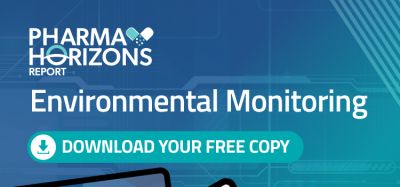Rapid micro methods and EMA’s post approval change management protocol
Posted: 26 April 2012 |
This is the second paper in our continuing series on Rapid Microbiological Methods that will appear in European Pharmaceutical Review during 2012. In my last article, we discussed a number of myths or misconceptions associated with the validation and implementation of rapid microbiological methods (RMMs). In fact, most RMM myths that have been circulating throughout our industry are not true or have been exaggerated to the point that many companies continue to be hesitant in exploring what RMMs have to offer.
One of the most prominent myths is that the regulators do not understand, accept or even encourage the use of rapid methods. I submit to you that the regulators want to see RMMs implemented, as their use is directly aligned with the future state of pharmaceutical manufacturing, QbD, PAT and continuous process and product improvement. Further – more, recent changes to regulatory guidance and proposed policy have made it easier to implement RMMs than ever before. In my last article, I introduced a relatively new process that the European Medicines Agency (EMA) launched that allows for the review and approval of RMM validation strategies before testing is initiated. A more thorough review of this process, better known as the Post Approval Change Management Protocol (PACMP), is presented herein.


This is the second paper in our continuing series on Rapid Microbiological Methods that will appear in European Pharmaceutical Review during 2012. In my last article, we discussed a number of myths or misconceptions associated with the validation and implementation of rapid microbiological methods (RMMs). In fact, most RMM myths that have been circulating throughout our industry are not true or have been exaggerated to the point that many companies continue to be hesitant in exploring what RMMs have to offer.
One of the most prominent myths is that the regulators do not understand, accept or even encourage the use of rapid methods. I submit to you that the regulators want to see RMMs implemented, as their use is directly aligned with the future state of pharmaceutical manufacturing, QbD, PAT and continuous process and product improvement. Further – more, recent changes to regulatory guidance and proposed policy have made it easier to implement RMMs than ever before. In my last article, I introduced a relatively new process that the European Medicines Agency (EMA) launched that allows for the review and approval of RMM validation strategies before testing is initiated. A more thorough review of this process, better known as the Post Approval Change Management Protocol (PACMP), is presented herein.
History
One reason for an apparent lack of willingness to move microbiology technology forward has been the industry’s perception that the European regulatory framework actually hinders, instead of encourages, the implementation of RMMs. For example, many endusers consider the European regulatory environment for submissions as being more complicated than and not as straightforward as the procedures they have used for RMM approvals in the US.
Although individual member states have approved RMMs for routine use, many of the tools provided by the FDA have not existed within the EMA. Additionally, there was no equivalent to the FDA Comparability Protocol in Europe, and companies have had no formal process for submitting a RMM validation strategy for review and approval prior to the initiation of the actual testing plan. For some firms, it has historically taken between 12 – 18 months for their RMM validation dossier to be reviewed and commented on by numerous member states, thereby extending the time (and cost) to revise validation plans, repeat testing, and implement the RMM. Fortunately, significant regulatory policy changes have recently been introduced which now pave the way for a friendlier and simpler strategy for RMM validation and implementation within Europe, and this strategy is very similar to the use of FDA’s Comparability Protocol. But before we review this new policy, it is appropriate to understand what a Comparability Protocol is and how firms have used this tool to obtain validation plan reviews and approvals.
FDA Comparability Protocol
A Comparability Protocol (CP) is a well-defined, detailed, written plan (and prior-approval supplement) for assessing the effect of specific CMC (Chemistry, Manufacturing, and Controls) changes in the identity, strength, quality, purity and potency of a specific drug product as these factors relate to the safety and effectiveness of the product. The CP describes the changes that are covered under the protocol and specifies the tests and studies that will be performed, including the analytical procedures that will be used, and acceptance criteria that will be achieved to demonstrate that specified CMC changes do not adversely affect the product. In terms of RMMs, the CP is a validation protocol to demonstrate that the RMM is suitable for its intended use (i.e., as an alternative to the current microbiological testing method used with the drug product). Furthermore, the CP can be particularly useful for changes of a repetitive nature, such as the use of an RMM for multiple products or processes.
Because the FDA reviews the CP, deficiencies in the validation plan can be corrected prior to performing the studies, eliminating the need to repeat some or all of the testing. Once the FDA approves the CP, the experiments are carried out, and if they meet the acceptance criteria provided in the CP, the FDA is notified via a Special Report [as per 21 CFR 314.81(b)(3)(ii)], the latter submitted to t he relevant application(s). The Special Report references the approved CP and includes a brief description of the RMM and its use, confirmation that the acceptance criteria have been met, and the date of implementation. The report can be as small as one page, because there is no need to communicate any of the testing data back to the FDA. Additionally, a reduced reporting category can be used to notify the FDA that the RMM is being implemented, such as a Changes Being Effected (CBE)-30 or CBE-0. For example, when using a CBE-0 notification process, a firm can immediately implement the RMM for routine use.
Finally, the same CP can be used (without going through another review and approval process) to subsequently validate the same RMM for additional products or samples, as long as the CP acceptance criteria are met. In this case, the same approved reduced reporting notification method can be used. It should also be noted that a number of companies have already used these same strategies for RMM approvals associated with drug product that is sold in the US.
EMA’s answer to the Comparability Protocol
As previously discussed, the EMA did not have a policy in place that allowed for the review and approval of a RMM validation plan prior to conducting the actual validation studies. Historically, the evaluation of a proposed variation was performed as a whole, meaning that the planned studies, methods and acceptance criteria were simultaneously submitted with the testing results. If questions arose by any of the competent authorities, the submission may have been delayed due to additional testing requirements. However, in early 2011, the EMA introduced significant changes to the management of RMM reviews that should make the validation and approval process much more predictable and in-line with the processes currently used by the FDA. The new process, which is very similar to FDA’s Comparability Protocol, is called the Post Approval Change Management Protocol (PACMP).
In this new, two-step process, a change management testing protocol is first submitted as a Type 2 Variation. Commission Regulation (EC) No. 1234/2008 (‘the Variations Regulation’) and the ‘Commission guideline on the details of the various categories of variations’ (‘the Classification Guideline’) defines a Type II variation as a ‘major variation’, which may have a significant impact on the Quality, Safety or Efficacy of the medicinal product. The protocol should include the overall testing strategy, such as the planned studies, acceptance criteria and methods. Prior to submitting the PACMP, a firm may also discuss their testing strategies with the EMA under the Scientific Advice procedure. Once the protocol is approved, the submitting company will perform the testing as specified in the protocol.
The second step of the PACMP process involves submitting the resulting data (assuming they have met the protocol’s acceptance criteria) as either a Type 1A or 1B Variation. The decision as to whether the data is submitted as a Type 1A versus a Type 1B variation is determined at the time of protocol review and approval.
Type IA variations are considered as minor variations that have only a minimal impact, or no impact at all, on the quality, safety or efficacy of the medicinal product, and do not require prior approval before implementation. If the data is submitted under a Type 1A variation, the company can immediately implement the rapid method, similar to what the FDA would consider under a CBE-0. The EMA also refers to this implementation strategy as the ‘Tell and Do’ procedure.
Type IB variations are also considered as minor variations, but is neither a Type IA variation nor a Type II major variation. In fact, when one or more of the conditions established in the Annex to the Classification Guideline for a minor variation of Type IA are not met, the concerned change may be submitted as a Type IB variation unless the change is specifically classified as a major variation of Type II. Specific supporting data for Type IB variations will depend on the specific nature of the change. Type IB variations must be notified to the National Competent Authority / EMA by the Marketing Authorisation Holder (MAH) before implementation, but do not require a formal approval. Furthermore, the MAH must wait a period of 30 days to ensure that the notification is deemed acceptable before implementing the change. The strategy is considered as a ‘Tell, Wait and Do’ procedure, and is similar to FDA’s CBE-30.
The most apparent difference between the EMA’s PACMP and FDA’s Comparability Protocol is that the former requires the submission of the test data. In any case, this is still a much more desirable RMM validation process than what companies were required to follow in the past.
Summary
The implementation of RMMs represents significant progress toward the acceptance of microbiological PAT and QbD solutions for the industry, and is directly aligned with the expectations for pharmaceutical manufacturing, quality and operational excellence in the 21st Century. Whether a firm plans on satisfying the expectations of the FDA, EMA or any other regulatory agency, it is still important to discuss your RMM qualification and implementation plans early in the design phase to ensure that the best strategy is agreed upon. You may even find that the use of a PACMP or Comparability Protocol may not even be required, depending on the rapid method technology, its application(s) and/or the products or materials on which the RMM will be used. This may be most applicable for test samples and their specifications that are not included in a regulatory dossier, such as in-process sample matrices.
About the author
Dr. Michael J. Miller is currently the President of Microbiology Consultants, LLC (http://microbiologyconsultants.com). For more than 23 years, he has held numerous R&D, manufacturing, quality, and consulting and business develop – ment leadership roles at Johnson & Johnson, Eli Lilly and Company, Bausch & Lomb, and Pharmaceutical Systems, Inc. Dr. Miller consults with multinational companies in providing technical, quality and regulatory solutions in support of RMMs, sterile and non-sterile pharmaceutical manufacturing, contamination control, isolator technology, validation and microbiological PAT. He also provides comprehensive training for his clients in the areas of rapid method validation and implementation. Dr. Miller has authored over 100 technical publications and presentations, is the editor of PDA’s Encyclopaedia of Rapid Microbiological Methods, and is the owner of http://rapidmicromethods.com. He currently serves on a number of PDA’s program and publication committees and advisory boards, is co-chairing the revision of PDA Technical Report #33: Evaluation, Validation and Implementation of New Microbiological Testing Methods. Dr. Miller holds a PhD in Microbiology and Biochemistry from Georgia State University (GSU), a BA in Anthropology and Sociology from Hobart College, and is currently an adjunct professor at GSU. He was awarded PDA’s Distinguished Service Award and was named Microbiologist of the Year by the Institute of Validation Technology (IVT).
Issue
Related topics
Related organisations
European Medicines Agency (EMA), Microbiology Consultants LLC







